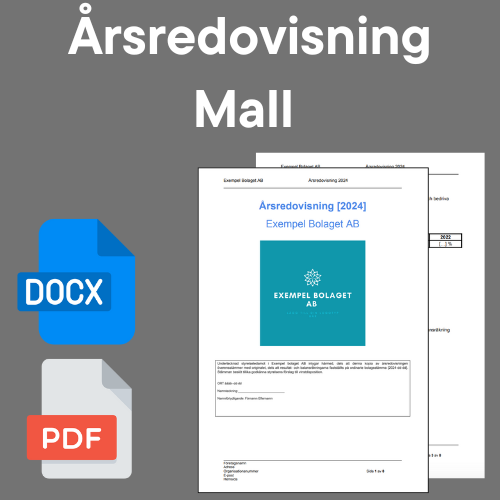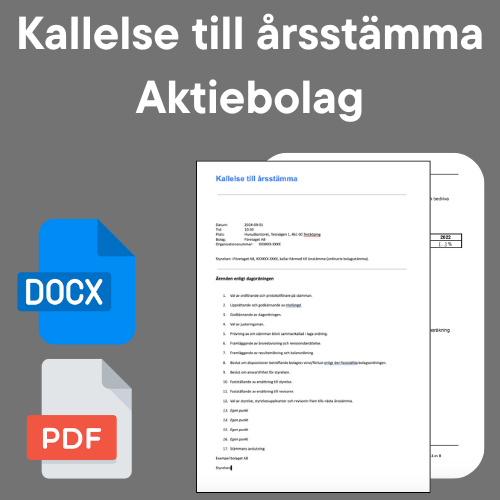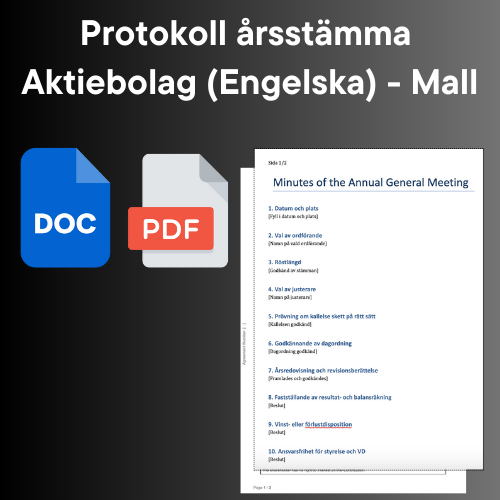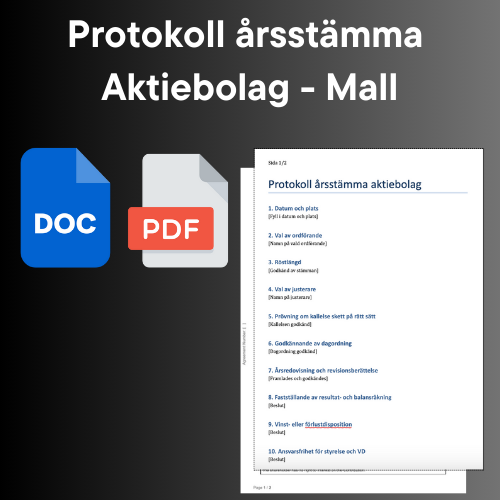Notice to the Annual General Meeting: A Detailed Guide
Share
Notice to the Annual General Meeting: A Detailed Guide
Table of Contents
- Legislation
- Practice and Examples
- Preparation of the Call
- Differences between Annual General Meeting and Extraordinary General Meeting
- Real Scenario
- Case study
- Summary
Legislation
Aktiebolagslagen (2005:551) is the central law that regulates notices to annual general meetings. According to this law, the notice to the annual general meeting must be issued no earlier than six weeks and no later than four weeks before the meeting. If the articles of association allow it, the notice can take place later, but never later than two weeks before the meeting.
The notice must include the following information:
- Date, time and place of the meeting.
- Proposal for the agenda.
- Information about the shareholders' right to participate and how they can register for the meeting.
Practice and Examples
The Swedish Companies Registration Office emphasizes that the notice must take place in accordance with the articles of association and may also require advertising in accordance with the specific rules that the company follows. It is the board that is responsible for the invitation being sent out correctly. If the notice is issued incorrectly, the decisions taken at the meeting may become invalid without the consent of the shareholders concerned.
Examples from NIBE Group show a typical agenda for an annual general meeting, which includes the election of a chairman, decisions on dividends, determination of the number of board members and auditors, as well as approval of remuneration reports and decisions on new issue of shares.
Preparation of the Call
Preparing a notice to the annual general meeting involves several steps:
- Determine the date and place: This is done well in advance and communicated to the shareholders.
- Create the agenda: The agenda should contain all important points to be discussed and decided at the meeting.
- Formulate the summons: It should contain all the necessary information mentioned above.
Example of summons from Wonder.Legal:
"All limited companies must have an annual general meeting once a year. Important decisions are made there, such as who will sit on the board the following year. This document is used to call the shareholders to the scheduled annual general meeting."
Differences between Annual General Meeting and Extraordinary General Meeting
An annual general meeting is held once a year and deals with issues such as the annual report, discharge of liability for the board, and dividends. An extra general meeting can be held if necessary to deal with specific issues that cannot wait until the next annual general meeting.
Real Scenario
One scenario could be that a company that has had an exceptionally good accounting period wants to distribute extra profit to its shareholders. The board can then call an extra general meeting where the shareholders can vote on this extra dividend.
Another scenario could be that a major change, such as a merger with another company, needs to be approved by the shareholders. Here, the board must issue a notice with detailed information about the merger and what it means for the shareholders.
Case study
Let's take an example from Enzymatica AB, where the notice contains details about the time and place of the meeting, how the shareholders must register, and a complete agenda. The board proposes that the annual general meeting decide on profit distribution, election of board members and auditors, as well as other important points that affect the company's future.
Summary
Convening the annual general meeting is a critical process that is governed by strict legal requirements and articles of association. It is crucial to follow these rules to ensure that the meeting is valid and that the decisions can be implemented without hindrance. By carefully preparing the notice and communicating effectively with the shareholders, the board can ensure a successful and productive AGM.
This article has explored the various aspects of calling an AGM, from legislation to practice and practical examples. Understanding and following these principles is essential to good corporate governance and to maintaining shareholder confidence.




